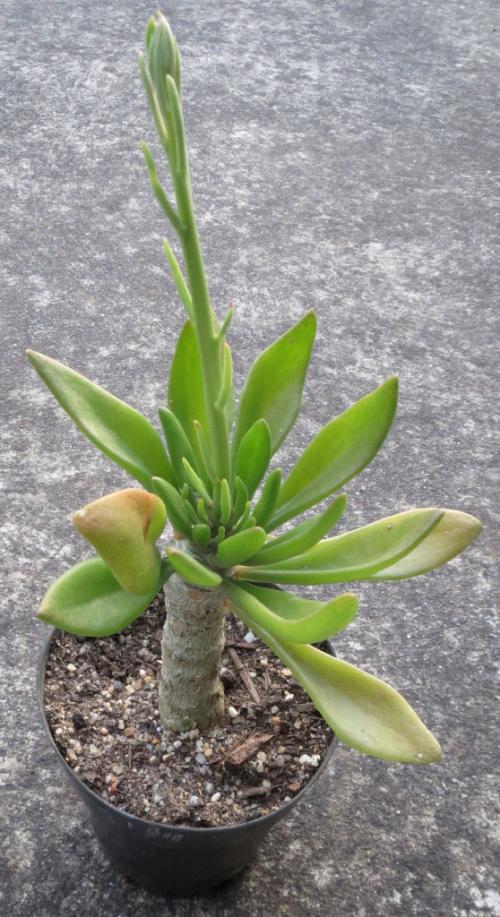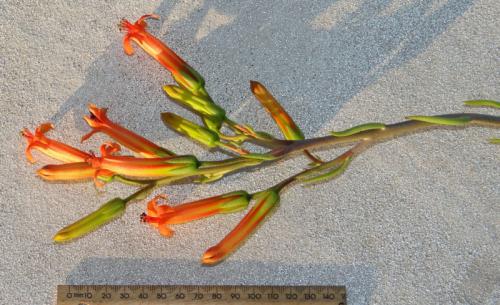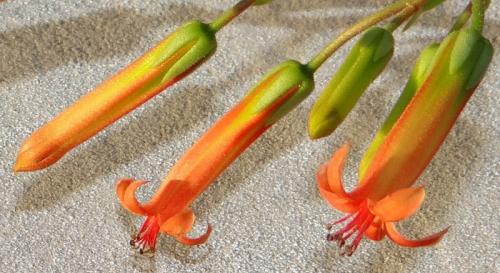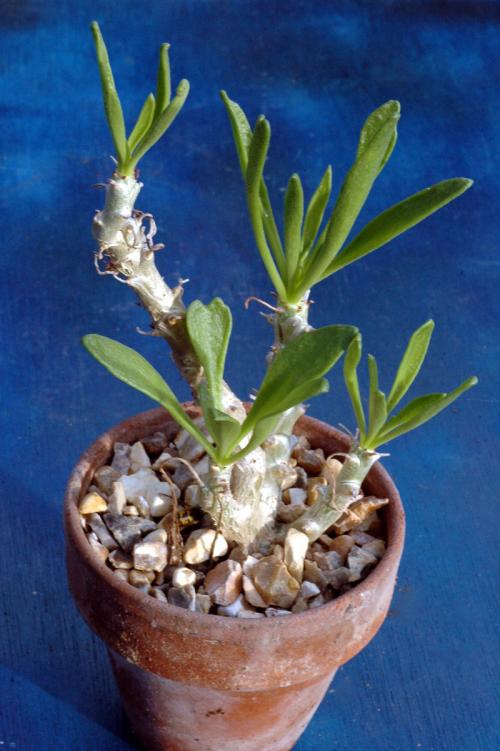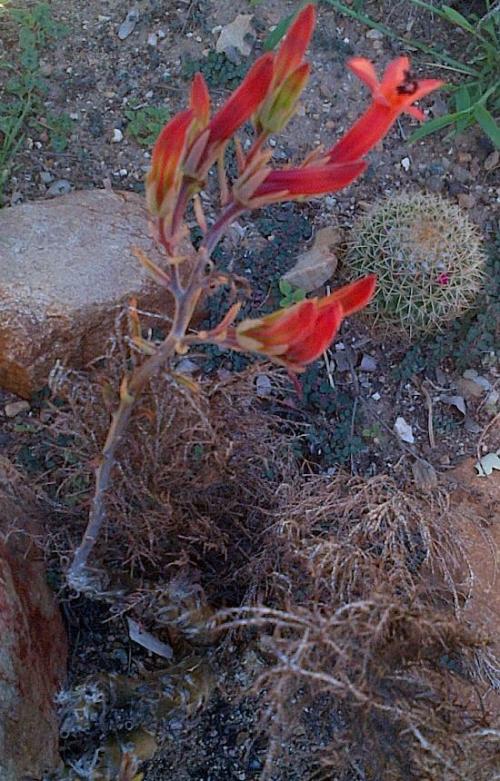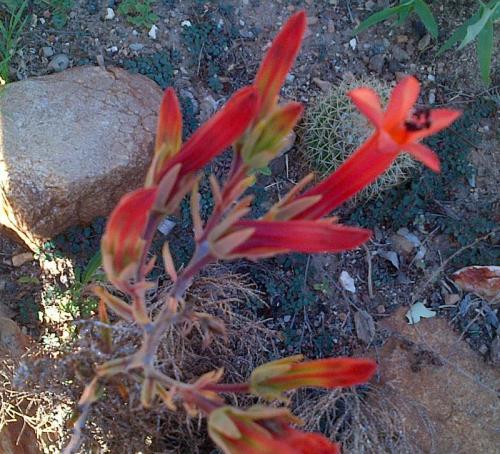GRANDIFLORUS ( Burman f.) Tölken, 1978 (engl./ fr.)
Synonyms:
Cotyledon grandiflora Burman f. (1768)
Cotyledon tuberculosa Lamarck (1786)
Cotyledon curviflora Sims (1818)
Distribution : SA (Northern Cape, Western Cape); Strandveld, Renosterveld, Succulent Karoo.
Description (according to IHSP, 2003) :
Low-growing sparingly branched succulents with decumbent branches, these with round obtuse phyllopodia 2 mm high, or smooth; bark grey to yellowish, peeling.
Leaves crowded, ascending, 6 – 14 x 0,6 – 1,5 cm, linear-elliptic to linear-oblanceolate, glabrous, upper face grooved to channelled, lower face convex, base tapering, apex obtuse.
Inflorescences ascending thyrses of 1 – 5 monochasia, to 60 cm, peduncle to 50 cm, 4 mm in diameter at base, bracts linear, 10 – 12 mm, pedicels 3,5 – 4 cm.
Flowers spreading-ascending, sepals linear-triangular, 7 x 2 mm, glandular-hairy, corolla curved-tubular, slightly expanding towards the throat, 3 – 4 cm, orange-red, glandular-hairy.
Flowering time : Late Summer
The flowers are the largest in the genus.
-------------------------------------------------------------------------------------------------------------------------------
Synonymes :
Cotyledon grandiflora Burman f. (1768)
Cotyledon tuberculosa Lamarck (1786)
Cotyledon curviflora Sims (1818)
Distribution : Afrique du Sud (Cap-Nord, Cap-Occidental); Strandveld, Renosterveld, Karoo succulent.
Description (selon IHSP, 2003) :
Plante succulente basse, modérément ramifiée, avec branches décombantes lisses ou parsemées de phyllopodia ronds et obtus longs de 2 mm ; écorce grise à jaunâtre s'exfoliant.
Feuilles regroupées, ascendantes, 6 – 14 x 0,6 – 1,5 cm, linéaires-elliptiques à linéaires-oblancéolées, glabres, face supérieure striée voire canaliculée, face inférieure convexe, base s'affinant, apex obtus.
Inflorescence en thyrses ascendants comportant 1 – 5 monochasia, jusqu'à 60 cm, pédoncule atteignant 50 cm, 4 mm de diamètre à la base, bractées linéaires, 10 – 12 mm, pédicelles 3,5 – 4 cm.
Fleurs écartées-ascendantes, sépales linéaires-triangulaires, 7 x 2 mm, à poils glandulifères, corolle courbée-tubulaire, s'épanouissant légèrement vers la gorge, 3 – 4 cm, orange-rouge, avec poils glandulifères.
Période de floraison : En fin d'été.
Les fleurs sont les plus grandes du genre.
